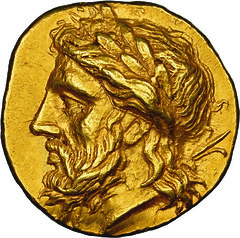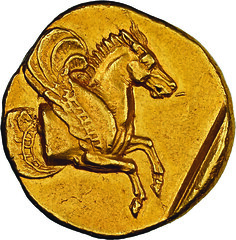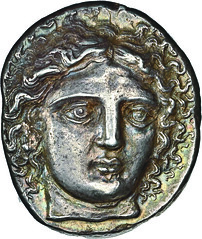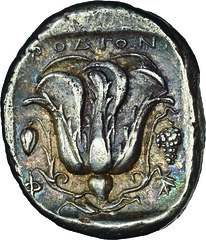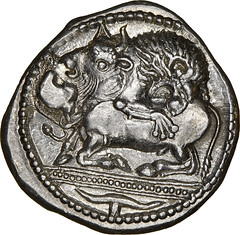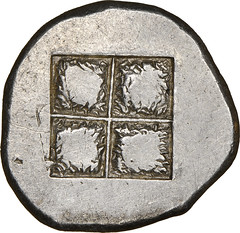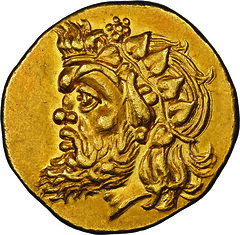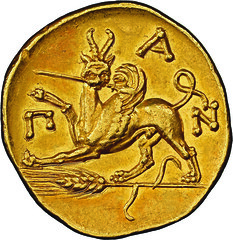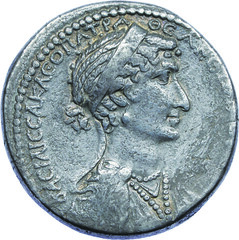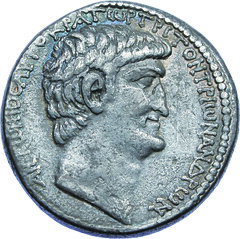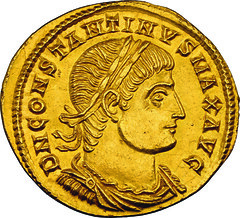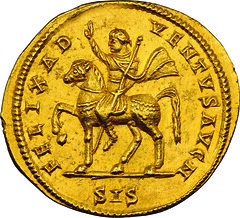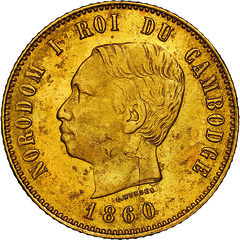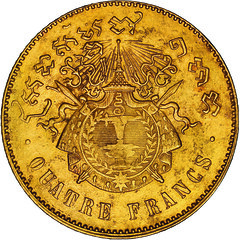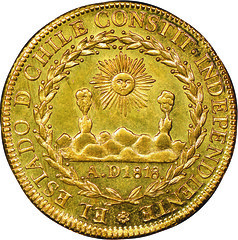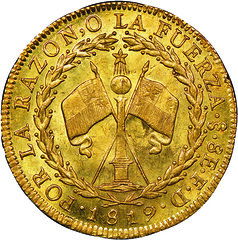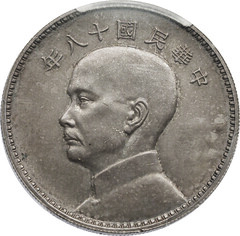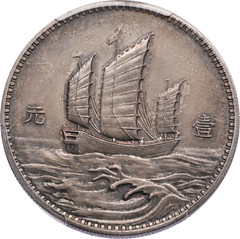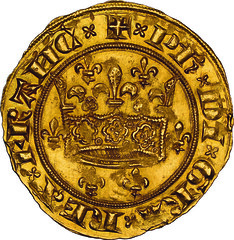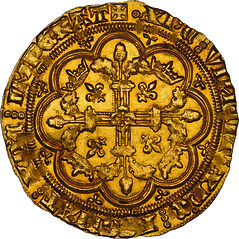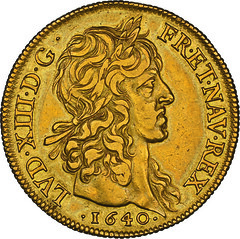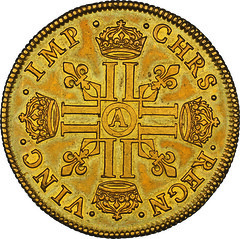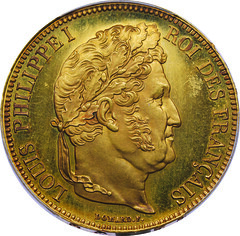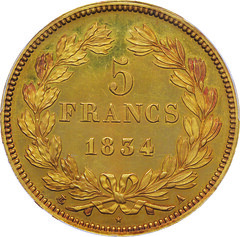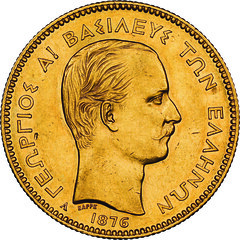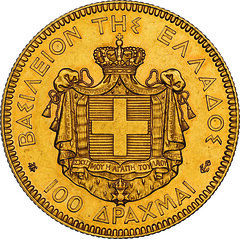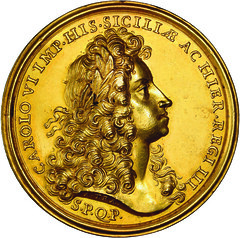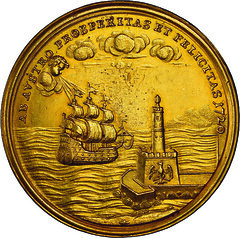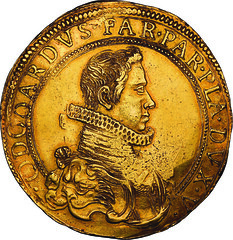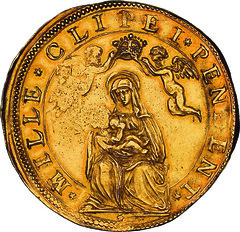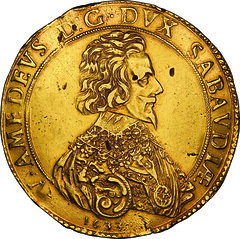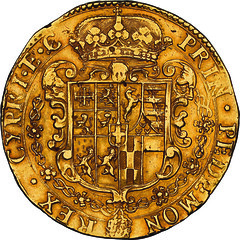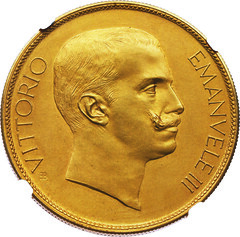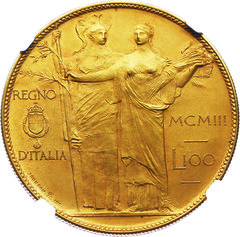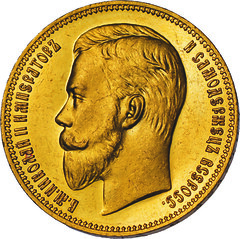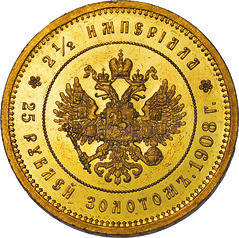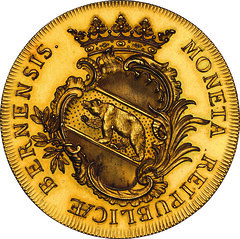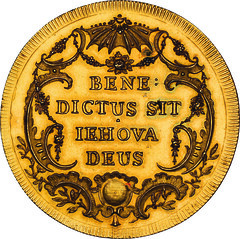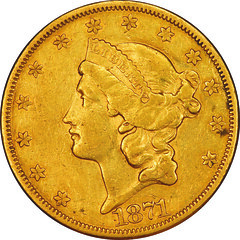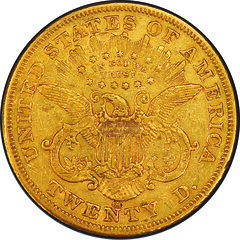
PREV ARTICLE
NEXT ARTICLE
FULL ISSUE
PREV FULL ISSUE
GADOURY OCTOBER 2023 SELECTIONSThis press release highlights lots in the Gadoury October 2023 sale. -Editor Great Rarities from All Over the World Gadoury will hold its auction sale on 14 October 2023. A special focus is on ancient coins, France, Italy and the USA. But even if your collecting interests lie elsewhere, do not miss out on studying this catalogue – it contains rarities from many countries across the globe. Once again, Francesco and Federico Pastrone invite coin enthusiasts to the elegant Hôtel Méridien Beach Plaza in Monaco. On 14 October 2023, they will hold their autumn auction sales. As usual, the auction house offers a wealth of high-calibre rarities in the five- and six-digit range. However, there is also an exciting offer of coins and medals in the mid-price segment, especially for collectors of gold issues. Lot 12: Lampsakos (Mysia). Gold stater, around 350 BC. From Feuardent-Leman auction (1921), No. 57; from the Engel-Gros and J. J. Grano Collections. From NGSA auction 1 (2000), No. 97 (cover piece) and NGSA 8 (2014), No. 46. NGC AU 5/5 4/5 Fine Style. Estimate: 80,000 euros. Diameter: 18 mm Lot 13: Rhodes (Caria). Tetradrachm, around 404-385. NGC AU* 5/5 5/5 Fine Style. Estimate: 60,000 euros. Diameter: 21 Width 25 Altitude mm Lot 14: Akanthos (Macedonia). Tetradrachm, 480-470. NGC MS* 5/5 4/5 Fine Style. Estimate: 60,000 euros. Diameter: 27,5 mm Lot 18: Panticapaeum (Bosporus). Gold stater, ca. 340-325. From NGSA auction 8 (2014), No. 32. NGC Choice XF* 5/5 4/5 Fine Style. Estimate: 90,000 euros. Diameter: 22 mm
Greek Coins Fans of outstanding provenances will be tempted by the gold stater from Lampsacus. It first entered the market in 1921, in a sale of the French Feuardent-Leman auction house. An extremely fine and fully centred stater from Panticapaeum of the finest style is the Greek coin with the highest estimate in this sale. Lot 40: Cleopatra VII and Marcus Antonius. Tetradrachm, Antioch on the Orontes or unknown mint in Phoenicia, around 36 BC. From UBS auction 78 (2008), No. 1203. Rare. Estimate: 30,000 euros. Diameter: 26 mm
Roman Coins Lot 52: Constantine I 307-337. Multiple issue of 1 1/2 solidi, Siscia, 324-325. From Hirsch auction 24 (1909), No. 3634 (Consul E. Weber Coll.); from Schulman auction (1923), No. 641 (Vierordt Coll.); from Leu auction 72 (1998), No. 509 and from SINCONA auction 4 (2011), No. 4131. Extremely rare. NGC Choice AU* 5/5 4/5. Estimate: 100,000 euros. Diameter: 29 Width 22 Altitude mm The highlight among the about two dozen Roman coins are the issues of the late third and early fourth centuries. For example, an aureus of Constantius Chlorus minted in Trier in 305/6 is from the Hoard of Beaurains; a 1 1/2 solidus issue by Constantine, created in 324/5 in Siscia, is from the Consul E. Weber and Vierordt Collections. There are also rarities from the Migration Period and the Eastern Roman Empire, for example a half hyperpyron of John V Palaeologus, the emperor who hoped to buy the help of the West against the Ottomans by converting to the Roman Catholic Church. Lot 159: Cambodia. Norodom I, 1860-1904. Pattern of 4 francs, 1860. NGC MS65. Estimate: 7,000 euros. Diameter: 34 mm Lot 162: Chile. Ferdinando VII, 1808-1833. 8 escudos, 1819. From the Dr. Moore Collection. NGC MS65. Estimate: 25,000 euros. Diameter: 37 mm
World Coins Or are you interested in Chile? In that case, Gadoury's autumn auction sale provides you with the opportunity to add an extremely rare 1819 eightfold gold escudo to your collection, which has previously been part of the Dr. Moore Collection. Lot 167: China. Yunnan. Dollar pattern, year 18 (1929). PCGS SP63+. Estimate: 20,000 euros. Diameter: 38 mm There are eleven lots from China. The highlight is a 1929 pattern that was created in Birmingham. In that year, the Chinese Ministry of Finance decided to have new dies with new motifs created for the coins with the portrait of Dr Sun Yat-Sen. Mints in Italy, Great Britain, the United States, Austria and Japan were commissioned to hand in patterns. However, not a single one was met with the Ministry's approval, and none of the designs were adopted. One of the rejected patters was this Birmingham issue with the depiction of a wonderful junk sailing ship. If you are interested in modern Chinese coinage, you should also take a close look. Gadoury presents two extremely rare pieces, both of 5 ounces, one of them had a mintage figure of 1,900 and was created in 1993, the second one was created one year later with a mintage figure of 1,100 specimens. Lot 209: France. Philip VI, 1328-1350. Couronne d'or, undated (29 January 1340). NGC MS63. Estimate: 45,000 euros. Diameter: 30 mm Lot 233: France. Louis XIII, 1610-1643. 40 livres = 4 louis d'or, 1640. Extremely rare. NGC XF45. Estimate: 70,000 euros. Diameter: 35 mm
A Major Series of French Coins We also know about the historical background of a second rarity of French numismatics that is on offer at Gadoury's autumn sale. Jean Warin and Louis de la Croix, the engraver of the Monnaie de Paris, faced each other in a contest to find the most impressive design. In this context, Warin created multiple pieces of the louis d'or, and one of these pieces is the coin offered by Gadoury. Lot 330: France. Louis-Philip I, 1830-1848. Proof gold pattern for the 5-franc silver piece, Paris 1834. Gadoury 678 (this specimen). From Sotheby auction (1954), King Farouk Collection, No. 547. PCGS SP66 (PROOF ULTRA CAMEO). Estimate: 200,000 euros. Diameter: 37 mm The most expensive piece of the sale has a spectacular provenance: King Farouk of Egypt was the proud owner of this Proof pattern for the French 5-franc silver piece, created in 1834 by the Paris Mint. Is it even necessary to mention that this precious pattern is of the finest quality? PCGS graded it SP66 (PROOF ULTRA CAMEO). Those who cannot or do not want to afford such an expensive piece can look forward to the small collection of French 20-franc gold pieces, assembled by an avid collector. The time frame ranges from Napoleon to the Franco-German War of 1871. Estimates start at 300 euros. Lot 451: Greece. George I, 1863-1913. 100 drachms, Paris 1876. Only 76 specimens minted. NGC AU58. Estimate: 70,000 euros. Diameter: 35 mm
A Greek Rarity Lot 536: Italy / Kingdom of Sicily. Carlo VI, 1685-1740, King of Sicily, 1720-1734. Gold medal commemorating the Senate of Palermo paying homage to him when he took over the rule in 1720. Extremely rare. Minor perforation. About FDC. Estimate: 40,000 euros. Diameter: 44,5 mm
Extensive Ensemble of Italian Issues Lot 540: Italy / Parma. Odoardo Farnese, 1622-1646. 6 doppie, n.d. Extremely rare. NGC AU58. Estimate: 100,000 euros. Diameter: 45 mm 100,000 euros is the estimate of a sixfold doppie by Odoardo Farnese, Duke of Parma, which was minted between 1622 and 1646. Its reverse depicts the mother of God with a circumscription taken from the Song of Songs 4:4. The Song compares the neck of a beloved to a strong tower with thousand shields on it. This means that Odoardo begged for Mary's protection to be bestowed on him – and he would have well needed that support: against the backdrop of the conflicts of the Thirty Years' War, his attempts at expanding his sphere of power were unsuccessful. Lot 623: Italy / Casa Savoia. Vittorio Amedeo, 1630-1637. 10 scudi d'oro, II Tipo, Turin, 1633. Extremely rare. NGC AU53. Estimate: 180,000 euros. Diameter: 44 mm Lot 665: Italy / Casa Savoia. Vittorio Emanuele II. Pattern for the 100-lira piece, Stabilimento Johnson, Milan, 1903. NGC PROOF 63 MATTE. Extremely rare. Estimate: 70,000 euros. Diameter: 35 mm
Collezione Real Casa Savoia Lot 765: Russia. Nicholas II, 1894-1917. 25 roubles – 2 1/2 imperials, St. Petersburg, 1908. Only 175 specimens minted. Estimate: 40,000 euros. Diameter: 33,5 mm
Small Series of Russian Issues Lot 781: Switzerland / Bern. 10 ducats, undated. Extremely rare. NGC MS61. Estimate: 110,000 euros. Diameter: 41 mm
Tenfold Ducat from Bern Lot 832: USA. 20 dollars, Carson City 1871 CC. PCGS XF45. Estimate: 30,000 euros. Diameter: 34 mm USA Once again, Gadoury is able to present a rich selection of US gold coins, including numerous rare years and mints. At this point we limit our list to:
You can order the catalogue at Éditions Victor Gadoury, 57, rue Grimaldi, 98000 Monaco; phone: +377 93 25 12 96; fax: +377 93 50 13 39; email: contact@gadoury.com. You can find the catalogue online at auction.gadoury.com, www.sixbid.com and www.numisbids.com. Of course, it is also possible to bid live on your computer at home via www.biddr.ch!
Wayne Homren, Editor The Numismatic Bibliomania Society is a non-profit organization promoting numismatic literature. See our web site at coinbooks.org. To submit items for publication in The E-Sylum, write to the Editor at this address: whomren@gmail.com To subscribe go to: https://my.binhost.com/lists/listinfo/esylum All Rights Reserved. NBS Home Page Contact the NBS webmaster 
|
